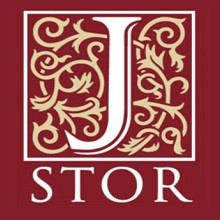
ارزش ها و انتظارات رهبری مدیران آینده
چکیده
در مطالعه تحقیقی مشترکی را با عنوان «دانشجوی (GLOBE)»، با تمرکز بر هفت کشور اروپای شرقی و مرکزی در وضعیت کنونی معرفی می کند. هدف کلی این پروژه بررسی ایده های و همچنین نمونه های اولیه رهبری مدیران آینده بر مبنای این فرض است که دانشجویان امروزی به احتمال زیاد مدیریت آینده را در سازمانهای کسب وکار را تشکیل خواهند داد. در این مقاله، پس زمینه نظری پروژهمان را توصیف میکنیم و مدلی را برای آنالیز و تفسیر دادههای جمعآوری شده توسعه میدهیم. با تکیه بر نشریات انتقادی مورد هدف مطالعات مدیریتی جامع بزرگ مقیاس مثل GLOBE، مفاهیم نظری پروژه اصلی را ارزیابی کرده و همچنین تناسبات و کاستیهای آنها در آنالیز و توضیح ویژگیهای رهبری دانشجویان را بحث می کنیم.
1. مقدمه
GLOBE، برنامه تحقیقاتی تأثیرگذاری رهبری و رفتار سازمانی جهانی توسط رابرت جی هوس از مدرسه Wharton دانشگاه پنسیلوانیا همراه با محققین دانشگاه مریلند در اوایل دهه 1990 آغاز گردید. این پروژه اولیه، مبنایی برای توسعه یک جامعه GLOBE در سراسر جهان تشکیل داد که شامل محققانی از 62 کشور تا پایان دهه 1990 بود. هدف اصلی GLOBE به این مربوط است که تا چه حد شیوهها و ارزشهای فرهنگی و همچنین برداشت از رهبری تجاری موثر جهانی یا مختص یک کشور یا یک خوشه کشور هستند (هوس، 2004). نتایج اولیه نشان دادند که صفات رهبری مشروط جهانی و همچنین فرهنگی وجود دارند (دن هارتوگ و همکاران، 1999). بدین معنی که درک چیزی که به منزله رهبری خوب است تا حدودی به زیربنای فرهنگی خاص بستگی دارد. این یافته محققان را قادر به شکل دادن به نظریات رهبری ضمنی در محیطهای فرهنگی مختلف کرد (هوس و همکاران، 2004؛ چوکار، برودبک، هوس، 2007؛ دورفمن و همکاران، 2012). با توجه به اروپا، نتایج شباهتها و همچنین تفاوتها در انتظارات رهبری را نشان دادند. شباهتها برای مثال بین فرهنگ اروپای شمالی و آلمانی پیدا شدند (دورفمن/ هنگس/ برودبک، 2004). با توجه به انتظار رفتار مستقل رهبری، فرهنگهای آلمانی و اروپای شرقی شباهتهایی را نشان دادند (لنگ و همکاران، 2005)، هر دو منطقه میتوانند در رأس انتظارات منطقهای GLOBE در مورد رفتار مستقل رهبری پیدا شوند (از جمله هوس، 2002: 57). در مقابل، تفاوتهای معنیداری در داخل اروپا یافت شد برای مثال بین آلمان و اتریش در یک طرف و کشورهای اروپای مرکزی و شرقی (CEE) (مثل استونی و رومانی) در طرف دیگر به ویژه برای رهبری درک شده. به علاوه تفاوتها در منطقه CEE یعنی بین فرهنگهای کشورهای مختلف CEE نیز پدیدار گردید (لنگ و همکاران، 2005؛ استیرر/ هارتز/ شیفینگر، 2006).
This article introduces the joint research project titled “GLOBE Student” with its focus on seven Central and Eastern European countries at its current stage. The project’s overall aim is to investigate cultural ideals and practices as well as leadership prototypes of future managers, based on the assumption that today’s students will likely form the future management in business organisations. In this article we describe the theoretical background of our project and develop a model for the analysis and interpretation of the data collected. We critically evaluate the original project’s theoretical concepts and also discuss their appropriateness and shortcomings for the analysis and explanation of students’ leadership prototypes.
1 Introduction
GLOBE, the Global Leadership and Organisational Behaviour Effectiveness Research Program, was initiated by Robert J. House of the Wharton School at the University of Pennsylvania together with researchers from the University of Maryland in the early 1990s. This initial project formed the basis for developing a worldwide GLOBE community, which consisted of researchers from 62 countries by the end of the 1990s. GLOBE’s main objective concerned the extent to which cultural practices and values, as well as perceptions of effective business leadership, are universal vs. specific to a country or a country cluster (House 2004: 3). First results showed that universal as well as culturally contingent leadership attributes exist (Den Hartog et al. 1999). This means that the perception of what constitutes good leadership is partly universal and partly dependent on the specific cultural context. This finding enabled GLOBE researchers to form implicit leadership theories in several cultural environments (House et al. 2004; Chhokar et al. 2007; Dorfman et al. 2012). Regarding Europe, the results revealed similarities as well as differences in leadership expectations. Similarities were found for example between North European and Germanic cultures (Dorfman et al. 2004). With respect to the expectation of autonomous leadership behaviour, Germanic and East European cultures revealed some similarities (Lang et al. 2005), both regions can be found at the top of GLOBE regional expectations toward autonomous behaviour of leaders (e.g. House 2002: 57). In contrast, significant differences were also found within Europe, for example, between Germany and Austria on the one hand and Central and Eastern European (CEE) countries (such as Estonia and Romania) on the other hand, in particular for perceived leadership. Furthermore, differences within the CEE region, i.e. between the cultures of different CEE countries, also emerged (Lang et al. 2005; Steyrer et al. 2006).
1. مقدمه
2. پس زمینه نظری درباره ابعاد فرهنگی و سبک های رهبری
ابعاد فرهنگی
سبکهای رهبری و نظریات رهبری ضمنی
رابطه بین ابعاد فرهنگی، سبکهای رهبری و نظریههای رهبری ضمنی
3. روش
4. محدودیتهای مطالعه و نتیجهگیری
1 Introduction
2 Theoretical background on cultural dimensions and leadership
Cultural dimensions
Leadership styles6 and implicit leadership theories
The relationship between cultural dimensions, leadership styles and implicit leadership theories
3 Method
4 Study limitations and conclusion
- ترجمه فارسی مقاله با فرمت ورد (word) با قابلیت ویرایش، بدون آرم سایت ای ترجمه
- ترجمه فارسی مقاله با فرمت pdf، بدون آرم سایت ای ترجمه
